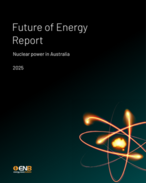This article is 10 years old. Images might not display.
With both benchmark oil prices sliding over 50% in the last seven months, E&P companies' profit margins have eroded, leading to savage cuts in capex and workforce.
While the most impacted have been the highly geared US shale explorers and producers, international oil super majors have also trimmed costs.
However, the sustained low price environment has not left Asian national oilers unaffected, with many also axing major spending programmes. While many including, Malaysia's Petronas and Indonesia's Pertamina have made steep cuts to spending, others like PetroVietnam have mothballed fields with high production costs made uneconomical in the low oil price environment.
The latest to join the fray is Thailand's PTT, the country's largest energy firm. Late last week, it reported its worst ever quarterly loss for the last quarter of 2014, spiralling down due to falling oil prices.
It reported negative turnaround of around $US817 million net loss compared with a profit of $456m in the corresponding quarter the year before.
PTT's E&P arm, PTTEP, hasn't fared much better. Pressured by lower prices, the upstream company has slashed its capital expenditure by almost 10% to $15.86 billion for 2015-2019 compared with $17.53 billion for 2014-2018.
Meanwhile, its operating expenditure is to be cut by over 13%.
While the focus has shifted to more exploration work closer home and in assets in or closer to production, the company is reviewing the viability of some of the high-risk and uncommitted projects in its portfolio.
Though it has since recovered from the lows in December, analysts are less than sanguine about the future.
JP Morgan pointed to concerns over oil prices falling to new lows in the coming months, which may expose PTTEP's "strategic and operational frailties." It cut the rating to underweight from neutral.
Of particular concern is the reserve life of PTTEP, which currently at six years is far below the industry average of 13 years.
This means that despite the stated capex cuts, the company will have to maintain high levels of E&P spend to be able to sustain its reserve replacement.
Accordingly, the bank has lowered its earnings estimate for 2015 and 2016 by 12% and 8% respectively, which is 30% to 40% lower than where the consensus estimate stands.
Analysts say with cost cutting in full force and high cost projects getting axed, another area which will bear the brunt is mergers and acquisitions activities.
In fact there is a shift in M&A activity by Chinese state-owned oilers, who now are more focused on a return on investment paradigm compared with energy security concerns that drove their acquisition strategy in the last few years.
Nationally, lower oil price is also making Beijing to take a hard look at efficiencies within the state-run firms. Reports suggest that China is reviewing the possibility of consolidating some of its oil companies including merging CNPC and Sinopec and CNOOC and Sinochem.
While details are thin, the motivator is that a merged entity would be able to take on other oil behemoths such as Exxon and Chevron more easily.






















